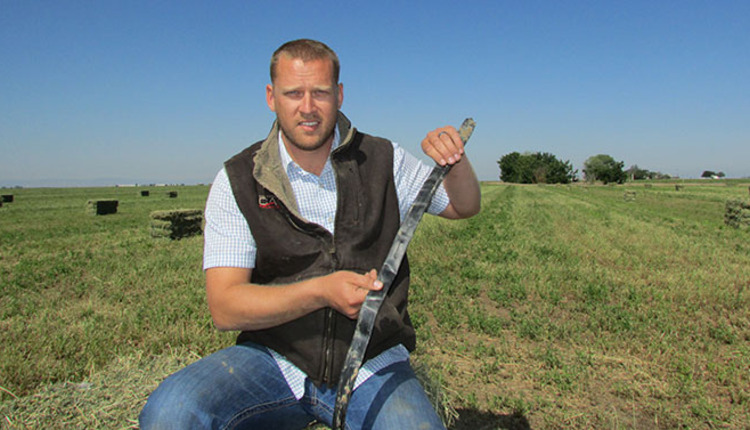
Growers, they say, who are willing to spend the money must also be prepared to shoulder a higher management approach. This includes understanding their source of water and its quality, being more attuned to timely rodent control, and becoming familiar with new equipment and how its delivery can be used effectively to improve yields over surface irrigation methods.
Other questions, such as what the grower will be using in rotation, should be taken into consideration when discussing row spacing. Emitter spacing and the depth of the dripline also needs to be addressed based on factors, such as soil texture, found in individual fields.
To ensure success, Mike Smith, a drip irrigation specialist with Landmark Irrigation in Madera, CA says, “It’s very important that the grower has an adequate supply of water and the desire to succeed. We’ve seen the best outcome with growers who are progressive and understand what they need to do to achieve success.”
That mindset for success, Smith notes, means taking on a higher degree of diligence to monitor a technological system, comprised of a filtration component and pumps to pressurize the system, and use the information to grow a better crop.
Despite lower hay prices, he adds, there are growers who are deciding that SDI makes sense because they know the importance of being the best grower they can be.
“They are doing more with less,” Smith says, adding, “their level of sophistication as knowledgeable agriculturists raises their level of being conservationists and custodians of the land.” Dennis Hannaford, Netafim’s product application support specialist, works with growers who are ready to embrace using SDI for their alfalfa production. He agrees with Smith’s assessment of those making plans to install SDI need to raise the bar on monitoring fields. He urges growers to prep their fields prior to installing a system to establish optimum and manageable growing conditions up front. Hannaford urges them to start by getting an informative soil nutrient analysis, ripping the ground to encourage deep roots and developing an effective rodent control program.
“When a grower decides to move ahead on a field, we need to have a good rodent control program in place,” Hannaford says to curtail interference with the lines. “Ramp up control into the winter when adult populations are in field and alfalfa is growing slower. Then continue to treat even when they can’t be seen. Also identify hot spots and migrations from neighbors.”
Smith concurs, saying the importance of a having a good rodent program in place before installing a drip system helps minimize the damaging aftermath of these pests.
Hannaford adds growers should have a rotation plan in mind so the system can be designed for the beneficial use on multiple crops.
Daniel Putnam, an extension agronomist and forage specialist with the University of California Davis, presented a talk this past March in Arizona focused on adapting to new technologies During the discussion, he provided extensive details about growing alfalfa with SDI.
While he noted that alfalfa has lost acreage to other crops and water limitations, there continues to be a strong demand for this forage.
Known for his expertise in alfalfa, Putnam studies a number of SDI questions to help growers and installers design efficient systems.
In a January 2016 article Putnam wrote for Hay and Forage Grower, he provided general parameters for installing a system. The driplines, he wrote, are installed 8 to 14 inches below the surface at 30 to 40-inch spacing, with some 60 inches apart.
“The ideal lateral drip spacing and emitter spacing are dictated by soil type and economics,” Putnam wrote. “Most of the systems we have observed source water from wells, whereas some have surface water sources; in the latter case, settling ponds or small reservoirs may be necessary to improve reliability of water supply and enable settling of suspended particles.”
Smith, who works with growers to design the most advantageous SDI program for their specific needs, says installation is mostly standard on 40-inch beds, but he can adjust for variations.
“Getting uniformity is the key for improving yields and getting weed pressure down,” he says, adding that when he sees that uniformity in alfalfa fields, where he’s installed a SDI system, it’s one of the most rewarding aspects of his work.
Written by Todd Rinkenberger
Todd Rinkenberger is the Director of Sales West Agriculture and Strategic Projects for Netafim USA. He is a 21-year veteran of the agricultural irrigation industry and has a background in crop and dairy production. He has a degree from CSU Fresno in Agricultural Economics. Todd.Rinkenberger@netafim.com

